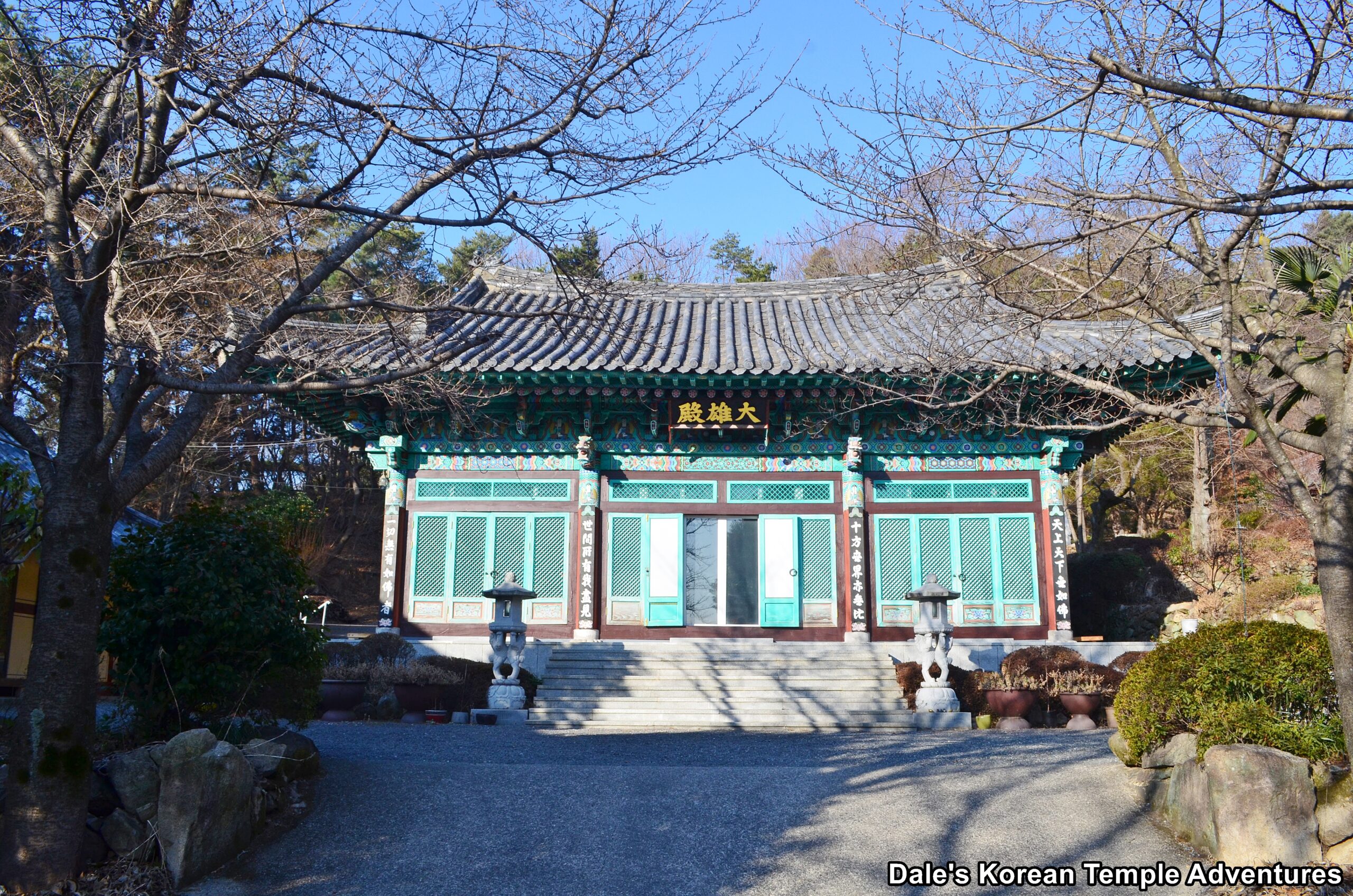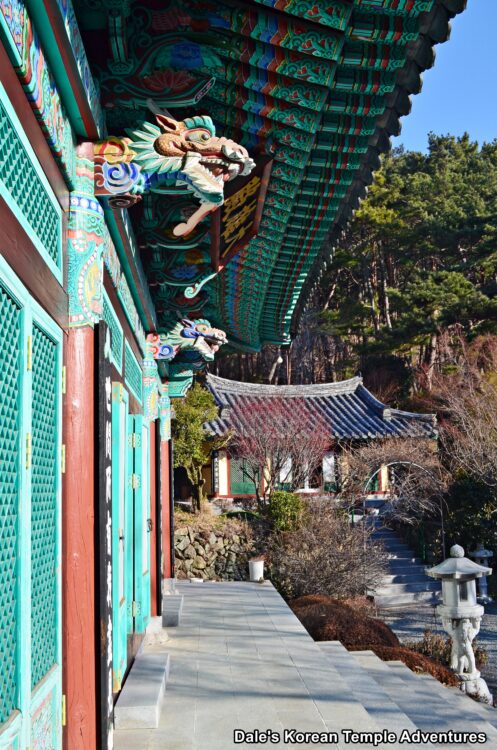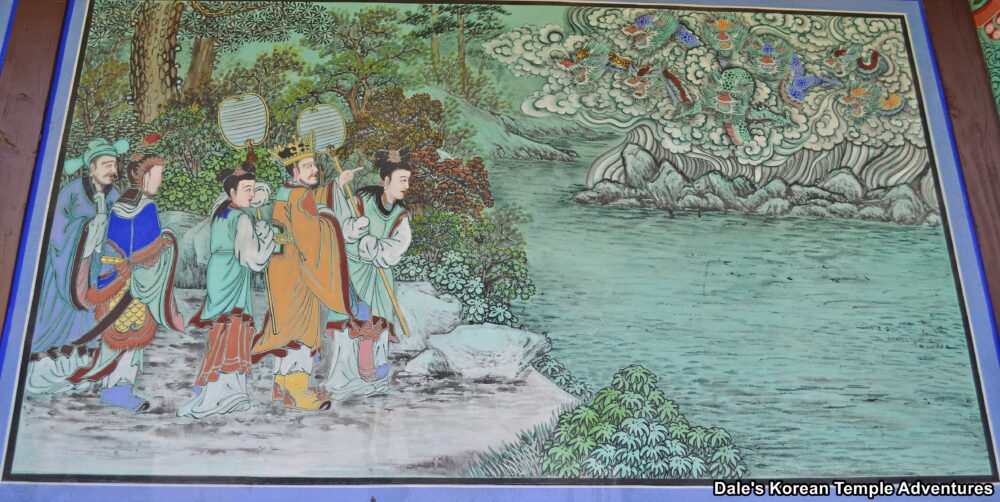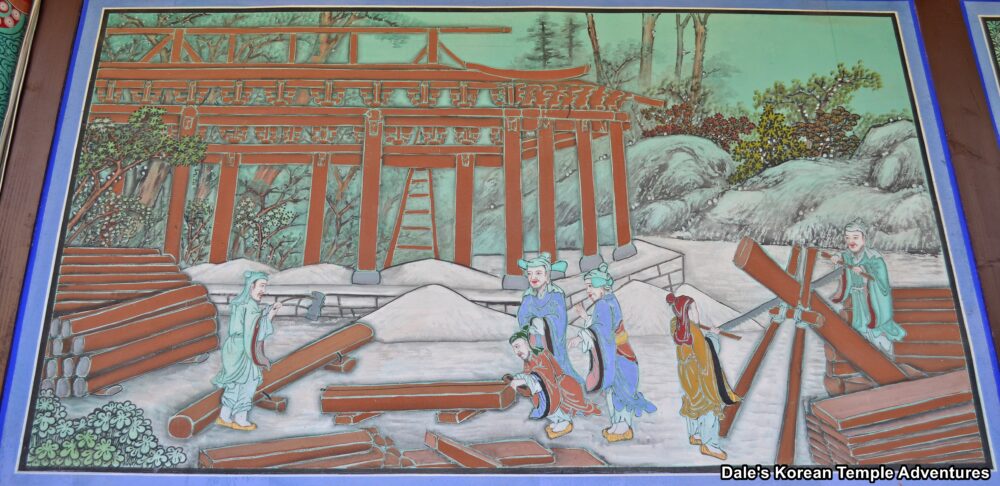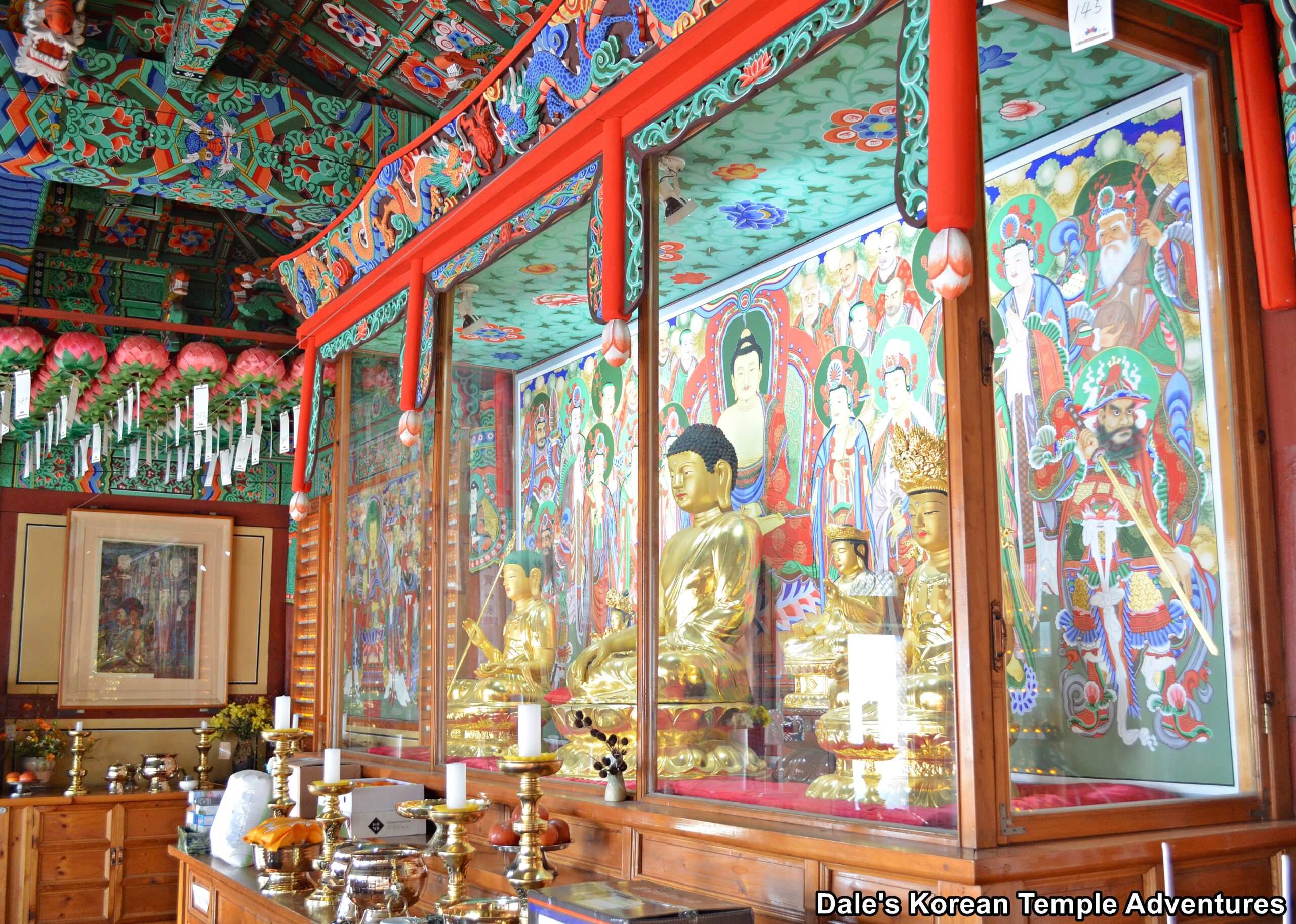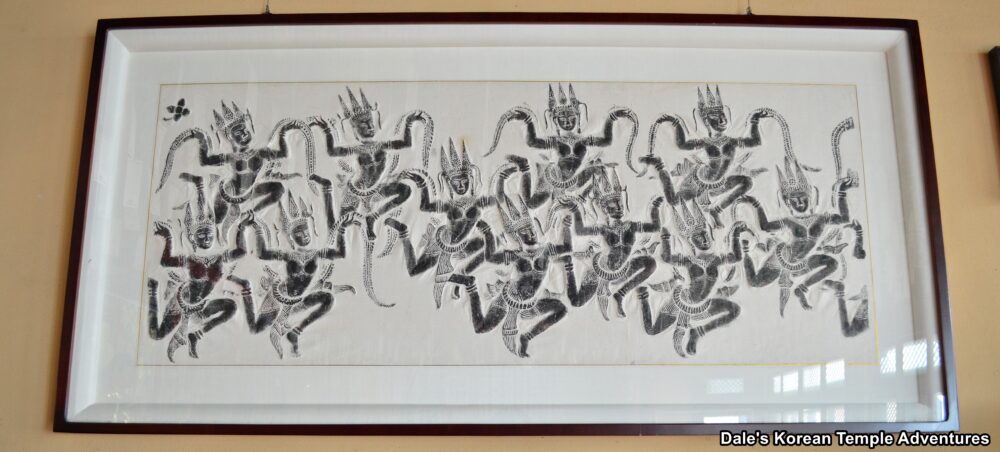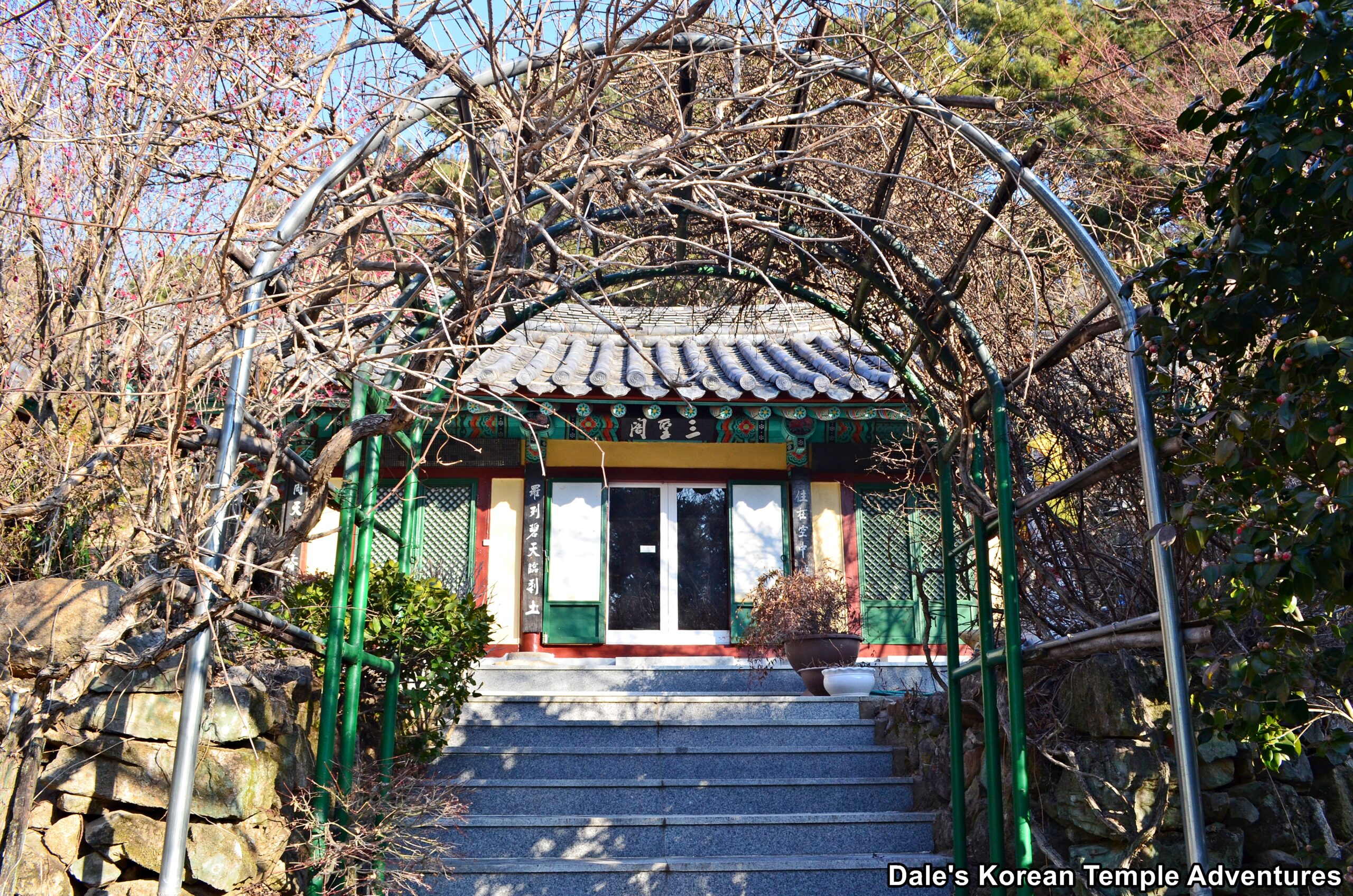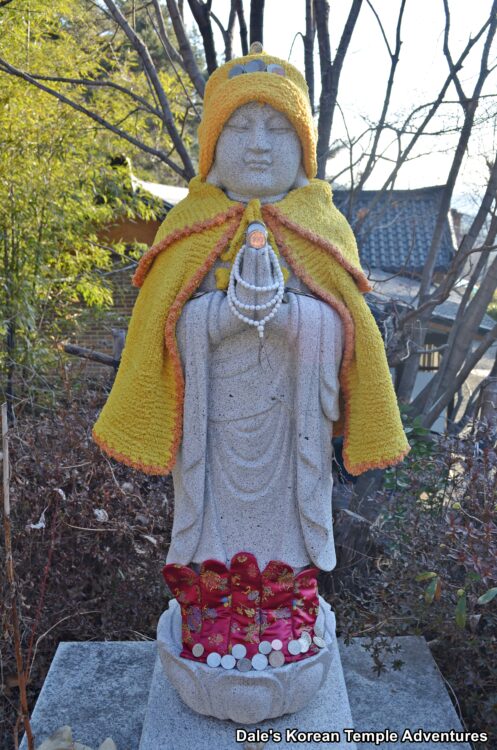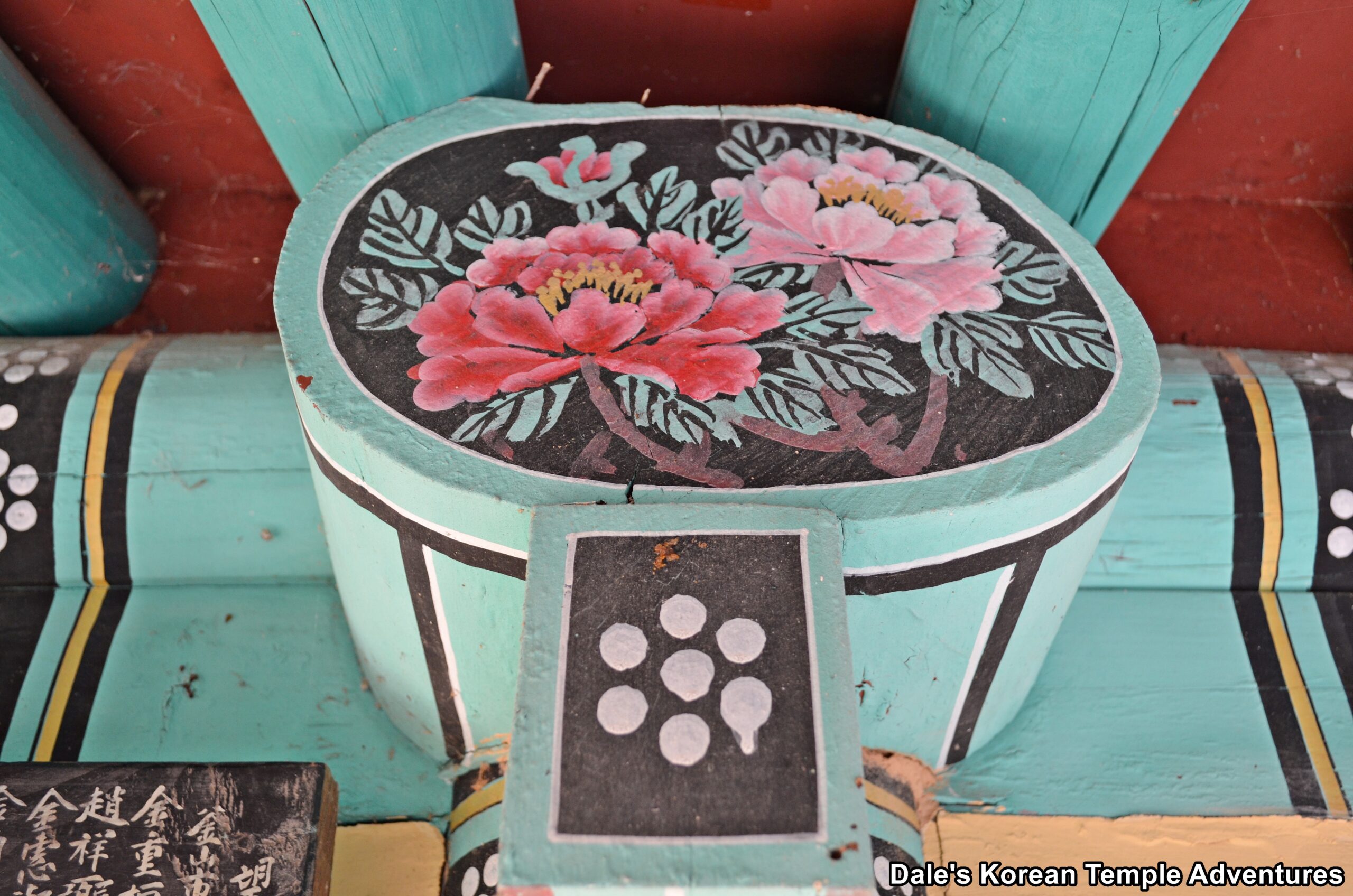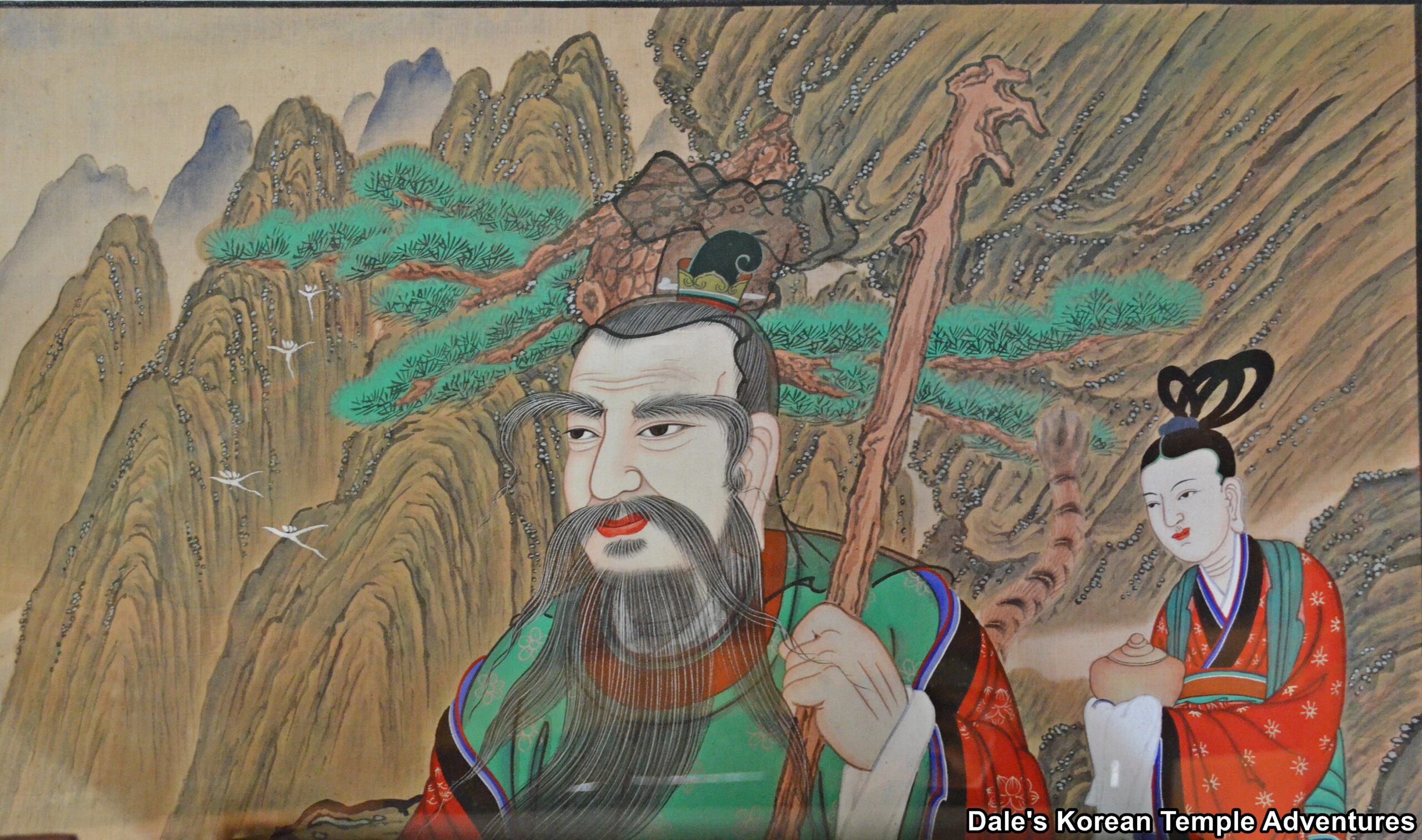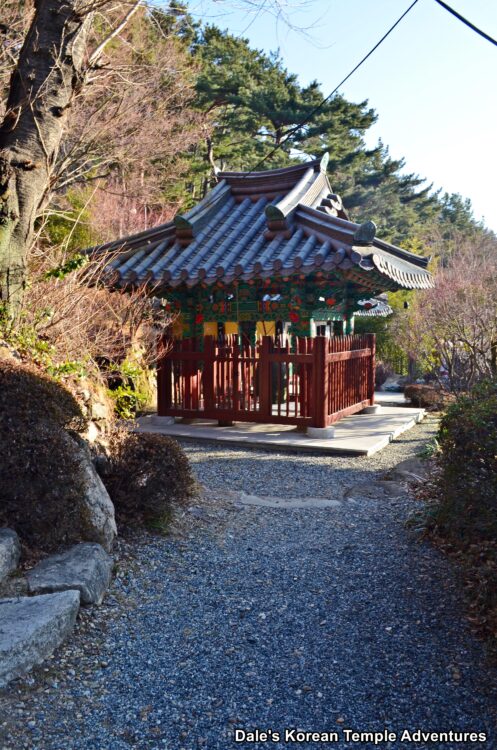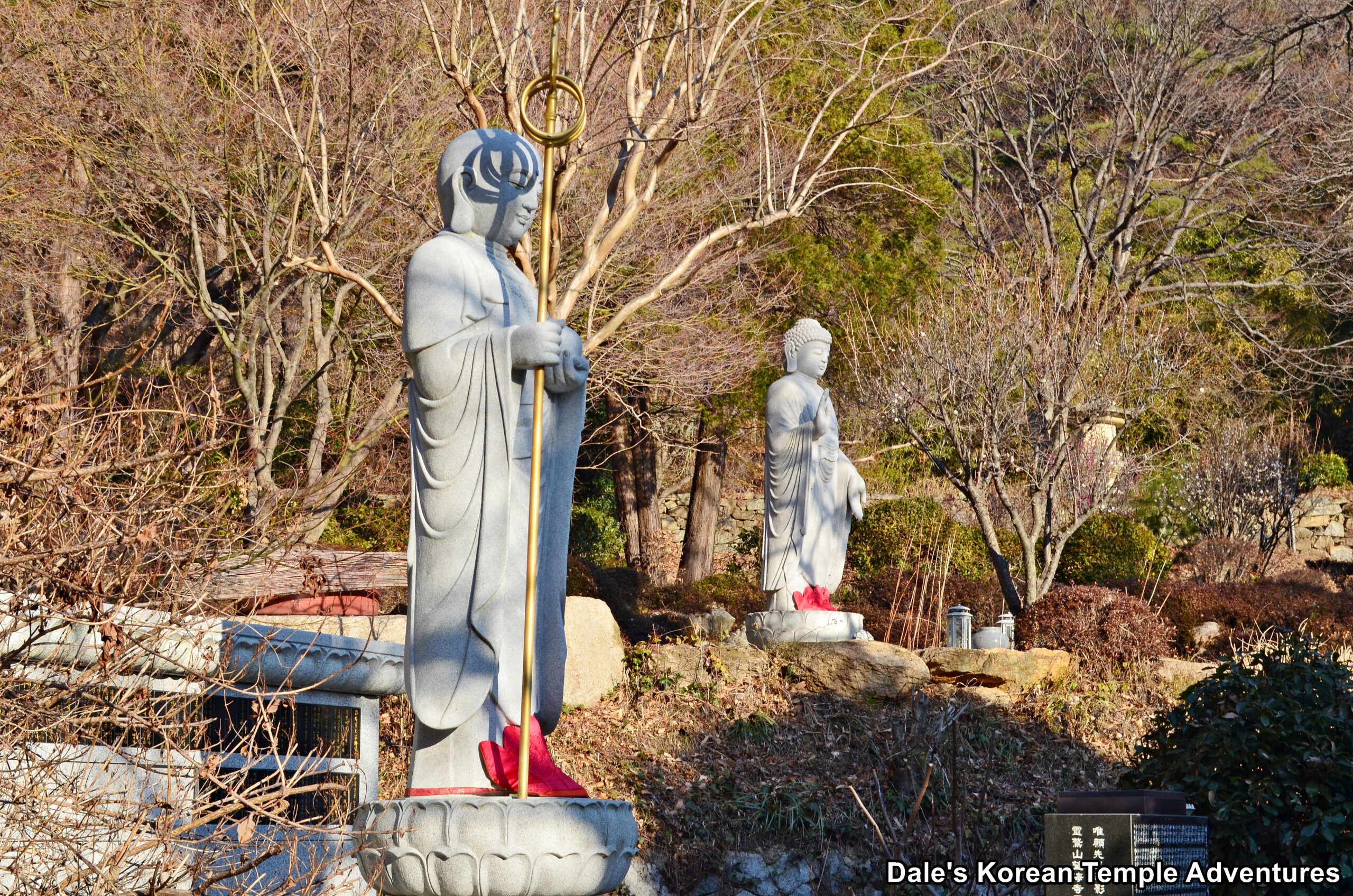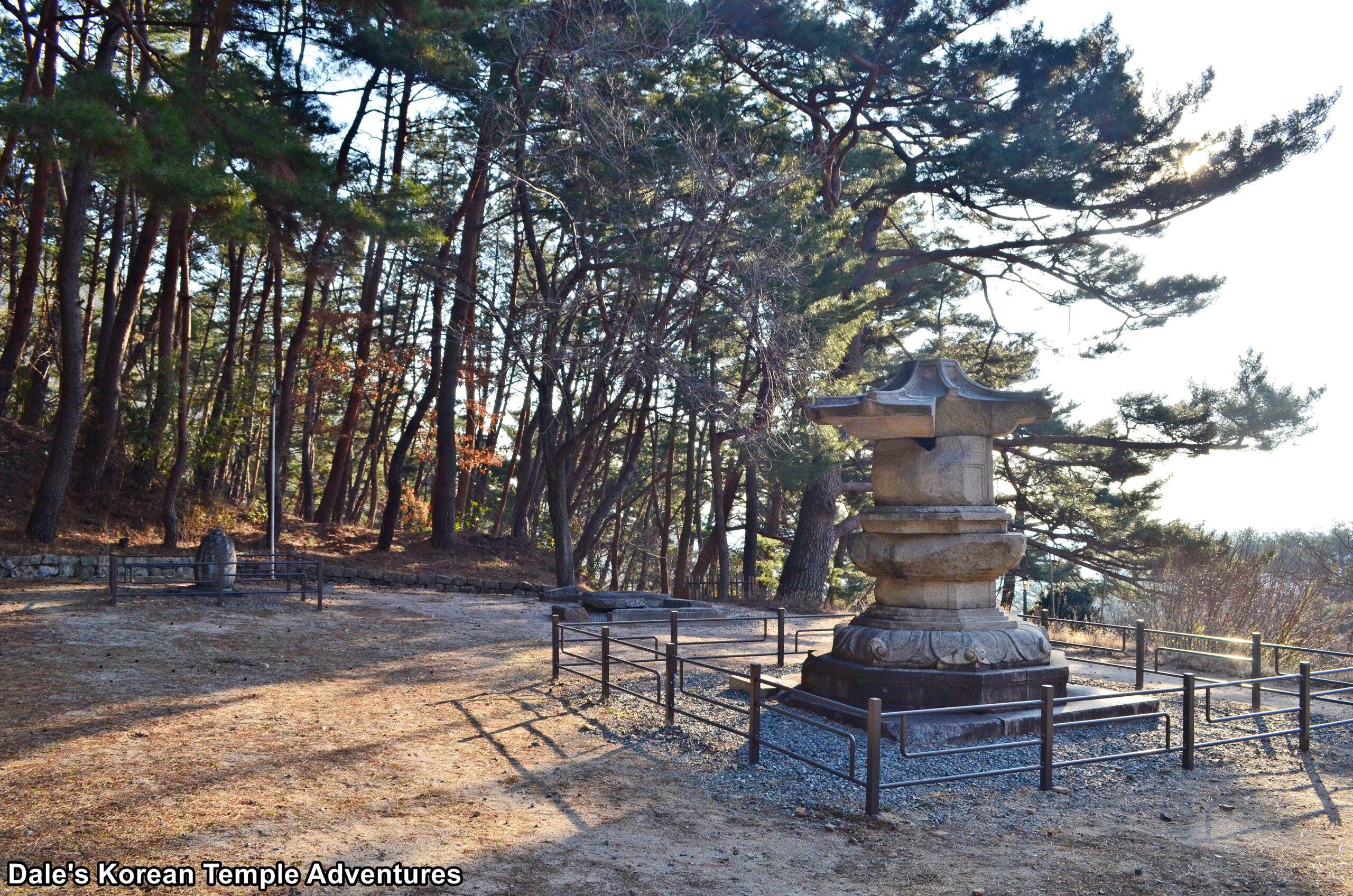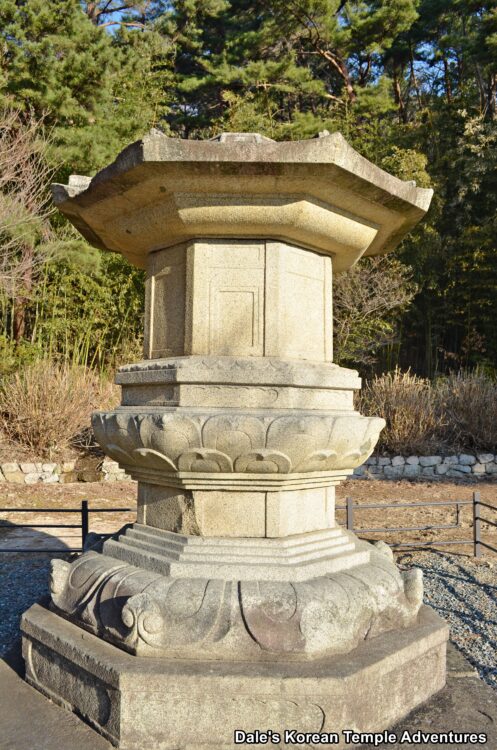Manghaesa-ji Temple Site – 망해사지 (Ulju-gun, Ulsan)
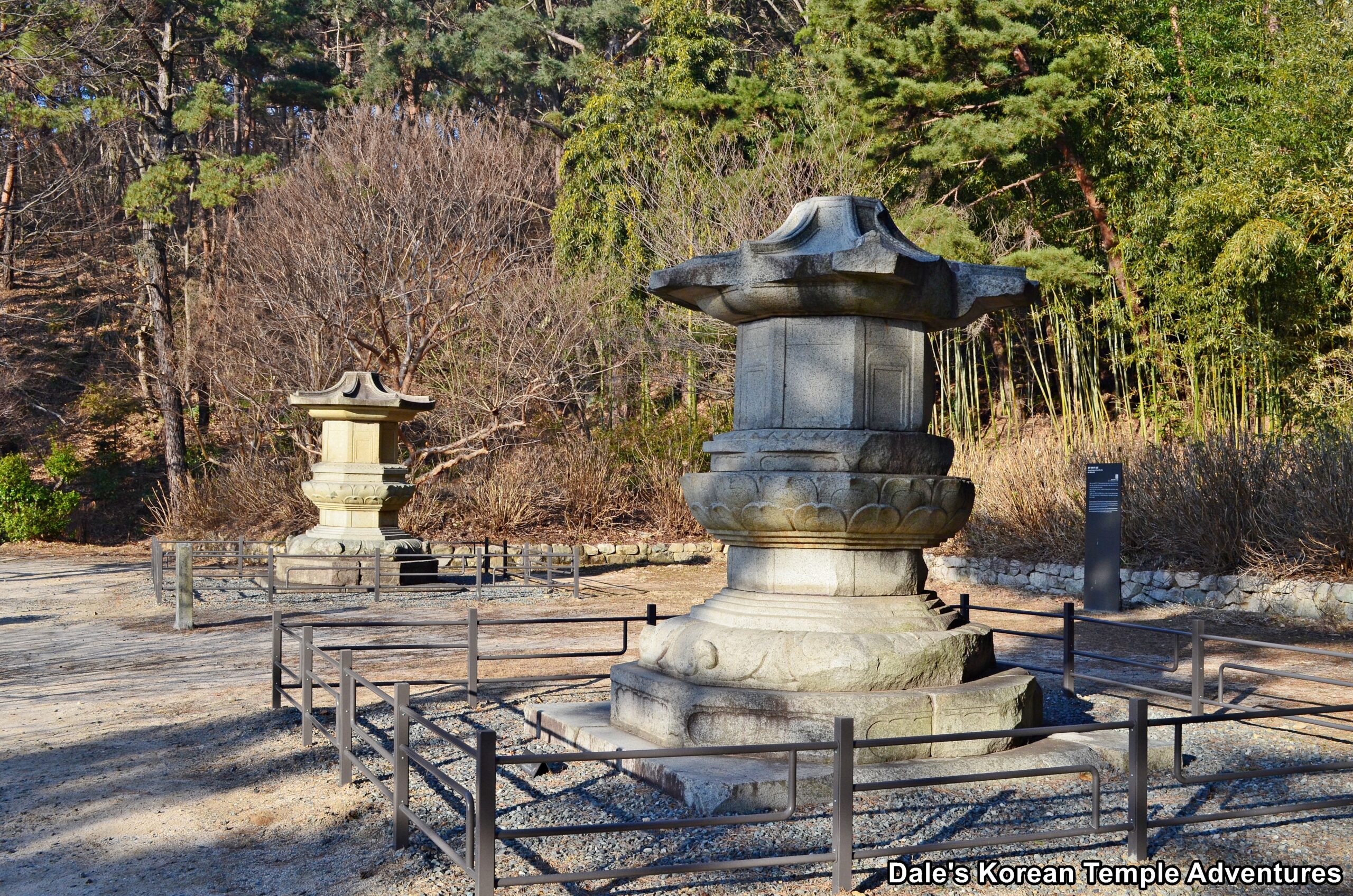
Temple Site History
Manghaesa Temple is located in the western part of Ulsan in Ulju-gun in the southern foothills of Mt. Yeongchwisan (352.1 m). It’s believed that the original temple, Manghaesa Temple (Sea-Viewing Temple), which also now acts as a former temple site in part, was first founded some time during the reign of King Heongang of Silla (r. 875-886 A.D.). The reason for this belief is that the temple appears in the Samguk Yusa (Memorabilia of the Three Kingdoms) in Book 2: “Wonder (Unified Silla),” Chapter 49: “The Song of Cheoyong and the Sea-Viewing Temple.” Originally, it seems, the temple was called Sinbangsa Temple. Unfortunately, there is no history about the temple from the Goryeo Dynasty (918-1392). During archaeological work and reconstruction of the temple in the 1960s, and according to inscriptions found on discovered tiles, the temple was rebuilt in 1544 during the Joseon Dynasty (1392-1910). Later, the temple was destroyed during the Imjin War (1592-98) in 1592. It’s believed that the temple was later rebuilt in either the 17th or 18th century. However, and according to 19th century records, the temple had come to be abandoned some time between 1861 and 1899. It was only later, starting in 1957, that the temple started to be rebuilt, once more. It does appear as though the former temple site is some 100 metres up the mountainside. Additionally, the current Manghaesa Temple and Manghaesa-ji Temple Site belong to the Taego-jong Order.
The Manghaesa-ji Temple Site acts as both a home for a Korean Treasure and as an active temple. So technically, the Buddhist site is both a temple (Manghaesa Temple) and a temple site (Manghaesa-ji Temple Site). As for its Korean cultural property, the temple is home to the Stupa at Manghaesa Temple Site, which is Korean Treasure #173.
Temple Site Myth
As for the myth that surrounds the Manghaesa-ji Temple Site, it appears in the historic Samguk Yusa (Memorabilia of the Three Kingdoms) in Book 2: “Wonder (Unified Silla),” Chapter 49: “The Song of Cheoyong and the Sea-Viewing Temple.” King Heongang of Silla (r. 875-886 A.D.) was the forty-ninth sovereign of the Silla Kingdom (57 B.C. – 935 A.D.). According to the Samguk Yusa, “During his reign houses with tiled roofs stood in rows from the capital to the four seas and not a thatched roof was to be seen. Soft music was heard on all the roadsides. Gentle sweet rain came with harmonious blessings and all the harvests were plentiful.
“One day the King went to Gaeun-po [modern Ulsan] for a picnic, and on his way back stopped to rest by the seashore. Suddenly a dense fog enveloped the land, so thick that the King could not find his way. The Royal Astrologer reported that the Master Dragon of the Eastern Sea was at play, and due respect must be paid to him in order to avoid his anger. Accordingly, the King ordered a temple to be erected nearby in honor of the dragon, and as soon as the royal edict was proclaimed the fog dissolved. Hence the King named that place on the seashore Gaeun-po [Port of Opening Clouds].
“The Dragon of the Eastern Sea was highly pleased and appeared before the King with his seven sons, praising the monarch’s august virtues, playing music and performing dances.
“One of the dragon’s sons followed the King to the capital and became his faithful servant. The King named him Cheoyong, conferred upon him the office of “Gupgan,” and gave him a lovely woman for his wife. But her beauty drew the attention of the Plague Spirit, who, taking the form of a handsome man, had secret love-meetings with her at night while Cheoyong was away. One night Cheoyong returned unexpectedly and found his wife sleeping with another man. He thereupon composed the following song:
“Under the moonlight of the Eastern Capital
I reveled late into the night.
When I came home and entered my bedroom
I saw four legs.
Two legs are mine,
To whom do the other two belong?
The person below is mine,
But whose body is raping her?
What shall I do?
“Thus he sang and danced, and then turned to leave, but the Plague Spirit rose from the bed and fell on his knees before Cheoyong, saying, ‘I admired your wife for her beautiful person and now I have despoiled her. When I perceived you were not angry with me, I was struck with wonder and admiration. Hereafter, when I see even the picture of your face, I swear I will not enter the house.’
“Believing this, all the people began hanging Cheoyong’s picture on their gates as protection against disease. [Cheoyong means “dragon’s son.” This story obviously records a folk belief].
“On returning to his palace the King had a scenic spot selected on the eastern side of Mt. Yongchusan [Holy Eagle Mountain] and there erected a temple called Manghaesa Temple [Sea-Viewing Temple] or Sinbangsa Temple [Bridal Chamber Temple] for the dragon as promised.”
Temple Site Layout
As you first approach the main temple courtyard from the temple parking lot, you’ll pass by a biseok (stele) and budo (stupa) perched on the hillside in a clearing. To the left of this hillside memorial, and in a bend in the pathway, you’ll finally come to the main temple courtyard. Past an auxiliary building to your right, you’ll find the Daeung-jeon Hall straight ahead of you. The exterior walls are a combination of Palsang-do (The Eight Scenes from the Buddha’s Life) and three murals that capture the essence of the temple site’s myth from the Samguk Yusa (Memorabilia of the Three Kingdoms). As for the interior of the Daeung-jeon Hall, you’ll find five statues on the main altar. The central image of the set, which are all housed inside a glass enclosure, is Seokgamoni-bul (The Historical Buddha). On either side of this central image are two smaller images. One is dedicated to Bohyeon-bosal (The Bodhisattva of Power), while the other is dedicated to Munsu-bosal (The Bodhisattva of Wisdom). And the two larger book-ending images are dedicated to Gwanseeum-bosal (The Bodhisattva of Compassion) and Jijang-bosal (The Bodhisattva of the Afterlife). Rounding out the interior is an older Shinjung Taenghwa (Guardian Mural) and Jijang-bosal mural to the left. And to the right of the main altar are two rather unique images. The first is a print dedicated to Gwanseeum-bosal, while the other is an ink-print from Angkor Wat in Cambodia.
To the left of the Daeung-jeon Hall are the monks’ dorms and administrative office. And to the right of the main hall is the Samseong-gak Hall. Making your way towards the shaman shrine hall, you’ll pass under a trellis with hanging shrubbery, as well as a stone monk statue who is meditating. What’s interesting about this statue is that it’s clothed in a yellow wool shawl and hat. This is more reminiscent of Buddhist statues in Japan, but it’s not unheard of in Korea; however, it’s rare.
The exterior walls to the Samseong-gak Hall are adorned in traditional dancheong colours. There are a few beautiful floral mural accents on the ends of the beams near the eaves of the structure like peonies. Stepping inside the Samseong-gak Hall, you’ll find three shaman murals on the main altar. All three are more modern and similar in style. These three images include the central image dedicated to Chilseong (The Seven Stars), the image of Dokseong (The Lonely Saint) to the right and Sanshin (The Mountain Spirit) to the left.
To the left rear of the Samseong-gak Hall is the Jong-ru Pavilion (Bell Pavilion). Housed inside this simplistic pavilion is a smaller sized bronze bell. To the rear of both the Daeung-jeon Hall and the Jong-ru Pavilion, and up a stone pathway, are two larger sized stone statues. These two three metre tall statues are dedicated to Seokgamoni-bul and Jijang-bosal.
The final place that visitors can explore, and the only remnants of the former temple site, are situated to the rear of the temple grounds. Perched upon an elevated embankment are the Stupa at Manghaesa Temple Site, which are Korean Treasure #173. In total, there are two octagonal stupas that are the same in both overall size and style. They are positioned from east to west and to the north of the Manghaesa Temple grounds. Of the two, the eastern stupa is more heavily damaged than its counterpart to the west. However, in November, 1960, the eastern stupa was repaired and rebuilt. The base of the stupa that supports the weight of the main bodies consists of three layers of stones. The bottom layer is octagonal in shape, and it supports a stone engraved with lotus flower patterns. The middle layer, on the other hand, consists of a high octagonal stone and a three-stepped support stone. Finally, the upper layer is beautifully engraved with a double-design of a lotus flower with sixteen petals. The entire surface of the main body is carved with a window frame design, while its corners are carved with pillar patterns. And the four faces of the body are engraved with a door design. Lastly, the roof stone consists of angle rafters that are horizontal. And each end of the roof stones have holes that once held wind chimes. The finials are missing from both stupas, but some parts are preserved elsewhere. It’s believed that the Stupa at Manghaesa Temple Site dates back to Unified Silla (668-935 A.D.).
How To Get There
From the Ulsan Intercity Bus Terminal, you’ll need to catch Bus #2100 to get to the Manghaesa-ji Temple Site. You’ll need to take this bus for 28 minutes, or 16 stops. You’ll need to get off at the Yeonghae-maeul bus stop. From where the bus drops you off, you’ll need to head north up the Manghae-2-gil road. Head up this road for 1.3 km, or 25 to 30 minutes, until you get to the temple and temple site.
Overall Rating: 6.5/10
Manghaesa Temple is a quaint countryside temple on the outskirts of Ulsan. While the Daeung-jeon Hall is beautiful and modest, as is the Samseong-gak Hall and the two larger statues to the rear of the main hall, it’s obviously the Stupa at Manghaesa Temple Site that’s the star attraction at the temple with it’s beautiful simplicity. It’s one of just a handful of temple or temple sites with a Korean Treasure at it in Ulsan. And while a bit trickier to get to, if you’re a fan of seeing Korean Treasures, then Manghaesa Temple and the Manghaesa-ji Temple Site should be on your list of sites to see.
